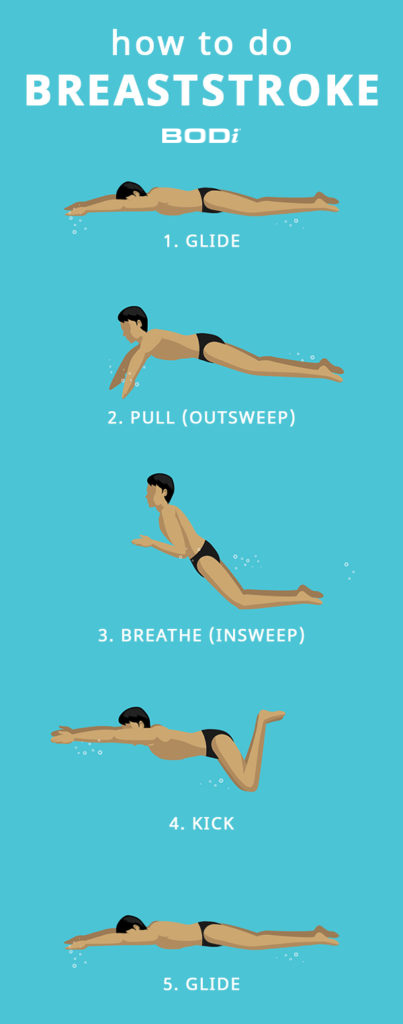How to Master the Breaststroke Technique
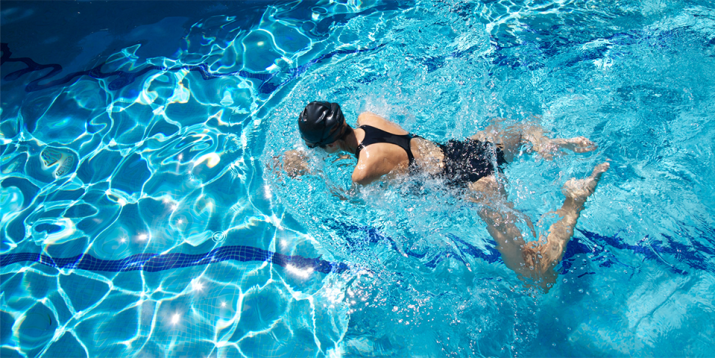
The breaststroke is often considered to be the most relaxing stroke of the four competitive swim strokes, but this is really only true if you can master the timing of it.
Here are a few tips to help you learn how to do the breaststroke and improve your stroke.
Breaststroke Overview
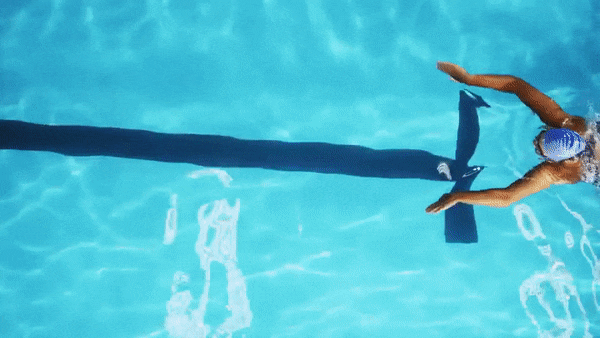
The most fundamental aspect of the breaststroke is to understand and learn the timing of its basic elements.
If you can remember one key mantra — pull, breathe, kick, glide — then you’ll be off to a great start.
The breaststroke is unique in that it is the only one of the four competitive swim strokes where the recovery (that is, the non-propulsive setup part of the stroke) takes place underwater.
As a result of this, it creates more drag than any of the other strokes and is the slowest of them — and can be the most unforgiving in terms of technique.
This is why it’s so important to learn how to swim the breaststroke and understand how to do the stroke with proper form.
How to Do the Breaststroke
Learning how to perfect the breaststroke is significantly easier once you understand the fundamental elements of the stroke.
Here’s a breakdown of the different parts that make up breaststroke.
Glide technique for breaststroke
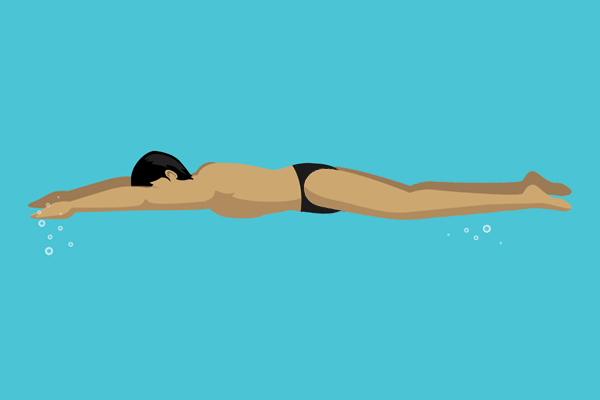
The glide is the beginning and ending position of the stroke cycle and is the foundation of breaststroke swimming: your body is in a straight line with your legs and arms extended, your face is in the water, and your body is prone.
Pulling technique for breaststroke
The breaststroke arm pull has four parts: Glide, outsweep, insweep, recovery.


- Glide: Start with your arms fully extended in front of your body with your palms pointing down and fingertips pointing forward (the sides of your thumbs should be touching). hands together in front of your chest in a praying position with your fingertips pointing forward away from your body. Then drive your arms forward and fully extending your arms straight in front of your body.
- Outsweep: Turn your palms slightly outward (so your thumbs point slightly downward) and, keeping your arms straight, sweep your arms out to your sides until they form a “Y” shape with your body.
- Insweep: Bend your elbows and move your forearms down and back as you pull your hands together in front of your chest in a praying position. This is the all-important phase of the breaststroke pull, as it serves as the power that pulls your body forward. This is also the phase where you lift your head out of the water to take a breath.
- Recovery: Extend your arms forward just below the surface to enter the glide phase, and begin the cycle again.
Kicking technique for breaststroke
Unlike freestyle and backstroke, the breaststroke doesn’t use a flutter kick. Instead, it mimics a frog kick:

- Start with your legs straight and together.
- Bend your knees so they point out to the sides while keeping your feet together. Your feet should come in toward your torso.
- Keeping your knees where they are, separate your feet to extend your legs straight out to a diagonal, in a “V” shape, and then quickly squeeze your legs together to come back to the starting position. This step should be fast and fluid.
“The timing of your kick should be fairly natural,” says USA Masters swim Coach Chris Georges. “Your kick should begin as your head and shoulders rise to take a breath, and it should finish with the powerful extension of your knees and the slamming together of your feet as your arms shoot forward to end up extended in the glide position with your face in the water.”
Another way that the breaststroke kick is different from other strokes is that there are moments of stillness, instead of constant movement.
“When you are gliding, your hands are touching each other, your feet are touching each other and you are doing nothing else,” Coach Georges says. “Always glide on every stroke.”
Breaststroke Turns
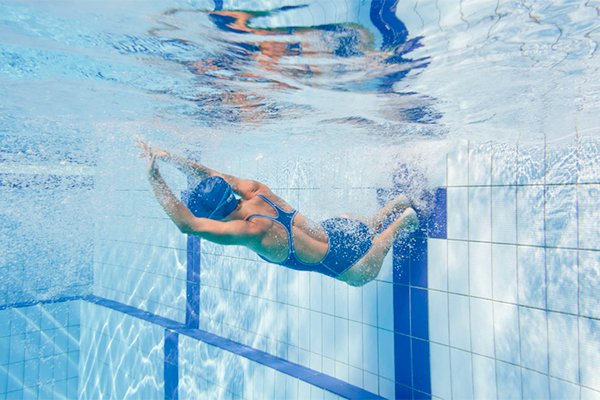
Breaststroke turns are significantly easier than the flip turns associated with freestyle and backstroke, mostly because it doesn’t involve doing a flip underwater.
- As you approach the wall, try to time it so that your arms are fully extended. In competition, both hands must touch the wall at the same time and be at the same height.
- Swing your body and legs up underneath you, bringing your feet to the wall, and turn your body sideways, so you are facing back towards the way you just swam.
- Let go of the wall and use your feet to push off in a streamline position: arms fully extended, squeezing your ears with your biceps, core tight, legs straight, and ankles together.
- Perform one full arm stroke and leg kick under the water before rising to the surface and taking your first stroke.
Common Breaststroke Mistakes
A common mistake made by beginners when swimming breaststroke is to pull your arms back too far.
“This results in greater resistance, because the further back the arms are pulled, the greater distance they must be recovered underwater to return to the glide position, creating more drag,” Georges explains.
When you sweep your arms to the side, you should stop when your arms form a “Y” shape as they reach out to the sides.
Then, bend your arms to pull your hands into the center of your chest. “No part of the arms or hands should ever come back past your shoulders,” Georges says.
A good drill to address this common mistake involves a simple foam noodle.
“Lay across the noodle so that it passes across the upper chest and under both armpits, and then swim your breaststroke,” Georges says. “The noodle will help prevent you from pulling your arms too far back, and will keep them out in front of you, where they belong.”
And although swimming has a relatively low risk of injury compared to most sports, get too many elements of swim stroke technique wrong and, over time, you can run the risk of swimmer’s shoulder.
Swim Workouts
Incorporating breaststroke into your swim workouts is a great way to add variety to your swimming routine and improve your feel for the water, which can, in turn, help improve your freestyle.
Swimming is one of the greatest ways to improve your aerobic endurance while being very low impact, unlike running or cycling.
It’s also an excellent way to burn calories! Check out our must-do swim workouts to help inspire you further.
